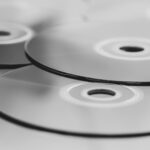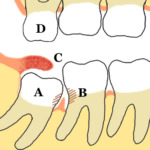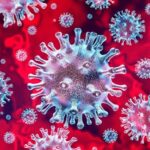Introduction
Are you tired of those unsightly reticular veins marring the appearance of your skin? Well, you’re not alone. Many people struggle with these pesky veins that seem to pop up out of nowhere. But fear not, because we’ve got some fantastic solutions that will have you saying goodbye to reticular veins and hello to clearer, healthier skin In this blog post, we’ll delve into what exactly reticular veins are and what causes them. We’ll also explore various treatments available to help reduce their visibility. And if that’s not enough, we’ll even provide some diet and lifestyle tips as well as natural remedies that can further aid in banishing those annoying veins.
What are Reticular Veins?
Reticular veins, also known as feeder veins, are dilated blood vessels that appear just beneath the surface of the skin. They typically have a bluish or greenish hue and can create a web-like pattern on the affected area. Unlike varicose veins, reticular veins are smaller in size but can still be quite noticeable. These veins often occur in areas such as the thighs, calves, and ankles. They can develop due to various factors including genetics, hormonal changes, obesity, prolonged standing or sitting, and even certain medical conditions. While they may not pose any serious health risks like varicose veins do, reticular veins can cause cosmetic concerns for many individuals.
Causes of Reticular Veins
Reticular veins, also known as feeder veins or blue veins, can be a source of frustration for many individuals. These unsightly veins usually appear on the legs and are larger than spider veins but smaller than varicose veins. While reticular veins may not cause any pain or discomfort, they can still impact one’s self-confidence.
- Genetics: So what causes these pesky reticular veins to develop? Several factors contribute to their formation. One common cause is genetics – if your parents or grandparents have had them, you may be more prone to developing them too. Hormonal changes during pregnancy and menopause can also increase the risk of developing reticular veins.
- Prolonged Standing or Sitting: Another culprit behind these visible blue lines is prolonged standing or sitting. Jobs that require long hours of being on your feet or sitting for extended periods can put undue pressure on the leg veins, leading to their appearance. Obesity and a sedentary lifestyle can exacerbate this issue as well.
- Trauma or Injury to the Legs: In some cases, trauma or injury to the legs can result in the development of reticular veins. This could include anything from repeated bruising to surgical procedures that affect blood flow in the area.
It’s important to note that while certain factors may increase your risk of developing reticular veins, they don’t guarantee their occurrence. Taking preventive measures and adopting healthy habits can help minimize their visibility and reduce further development.
Treatments for Reticular Veins
- Sclerotherapy: When it comes to treating reticular veins, there are several effective options available. One popular method is sclerotherapy, which involves the injection of a special solution into the affected veins. This causes irritation and scarring within the vein, eventually leading to its closure.
- Laser Therapy: Another treatment option is laser therapy, where intense beams of light are used to target and destroy the unwanted veins. Laser therapy is particularly useful for smaller reticular veins that may be difficult to treat with other methods.
- Ambulatory Phlebectomy or Endovenous Laser Ablation: For more severe cases or larger reticular veins, surgical intervention such as ambulatory phlebectomy or endovenous laser ablation may be recommended. These procedures involve physically removing or closing off the problematic veins through small incisions or heat energy from a laser.
It’s important to note that while these treatments can effectively reduce the appearance of reticular veins, they do not guarantee permanent removal. Maintenance treatments may be required in some cases.
Diet and Lifestyle Tips to Reduce Visible Reticular Veins
- Stay Hydrated: Drinking an adequate amount of water helps improve blood circulation and keeps your veins healthy.
- Eat a Balanced Diet: Include foods rich in antioxidants, such as fruits and vegetables, to promote overall skin health and strengthen blood vessels.
- Reduce Salt Intake: Consuming excessive amounts of salt can contribute to water retention, causing veins to appear more prominent.
- Engage in Regular Exercise: Physical activity helps improve blood flow and strengthens the muscles that support your veins. Aim for at least 30 minutes of moderate-intensity exercise most days of the week.
- Avoid Prolonged Standing or Sitting: If your job requires long periods of sitting or standing, try taking breaks every hour to stretch and move around.
- Wear Compression Stockings: These specially designed stockings provide gentle pressure on the legs, helping reduce vein swelling and improving circulation.
- Maintain a Healthy Weight: Excess weight puts added pressure on your veins, making them more prone to becoming visible or enlarged.
Natural Remedies for Reticular Veins
- Exercise Regularly: Engaging in aerobic activities like walking or swimming can help improve blood flow and reduce the appearance of reticular veins.
- Maintain a Healthy Diet: Eating foods rich in antioxidants such as fruits and vegetables can support collagen production and strengthen blood vessel walls.
- Elevate Your Legs: By elevating your legs above heart level for short periods during the day, you can encourage proper blood flow back to the heart.
- Apply Natural Topical Treatments: Certain creams or gels containing ingredients like horse chestnut extract or witch hazel may provide relief from symptoms associated with reticular veins.
Also Read: Nature’s Secret Weapon: How Climate Adaptation by Microorganisms is Saving the Planet
Conclusion
While medical interventions are essential for addressing reticular veins, making certain lifestyle changes may also play a significant role in reducing their visibility. A healthy diet rich in antioxidants and anti-inflammatory foods can promote better vein health overall. Regular exercise helps improve circulation and reduces excess weight that could contribute to vein issues. Additionally, natural remedies such as horse chestnut extract and witch hazel have been used traditionally to support vascular health and reduce the appearance of varicose veins or spider webs on your skin’s surface.
















